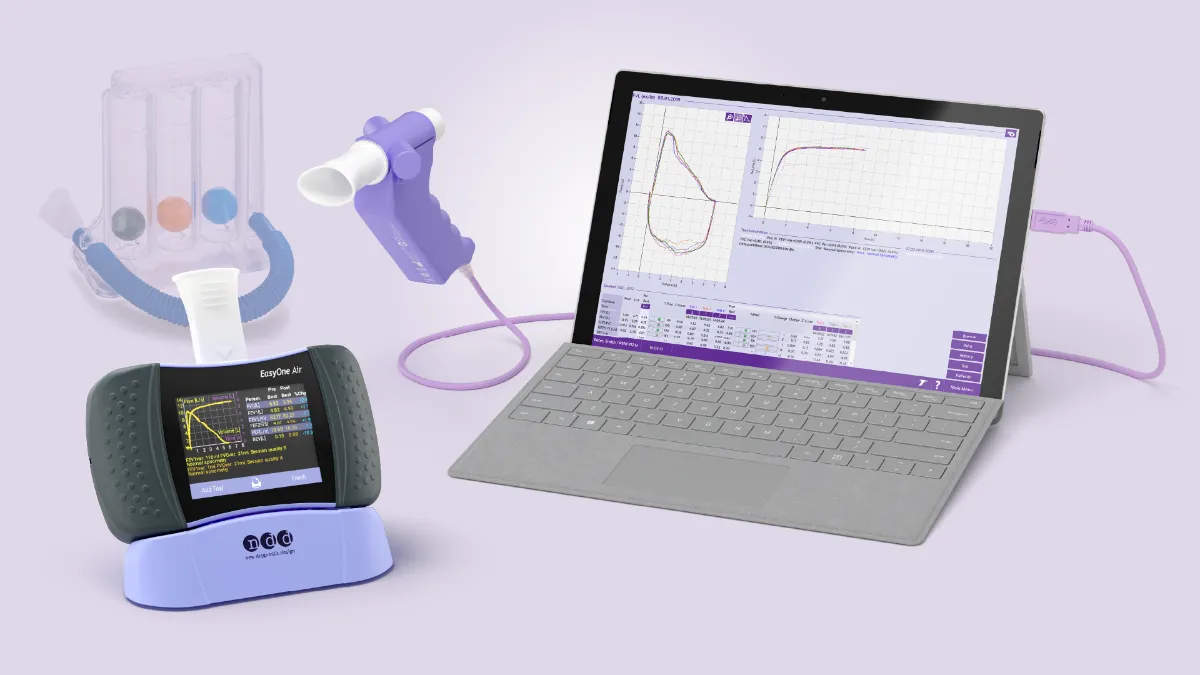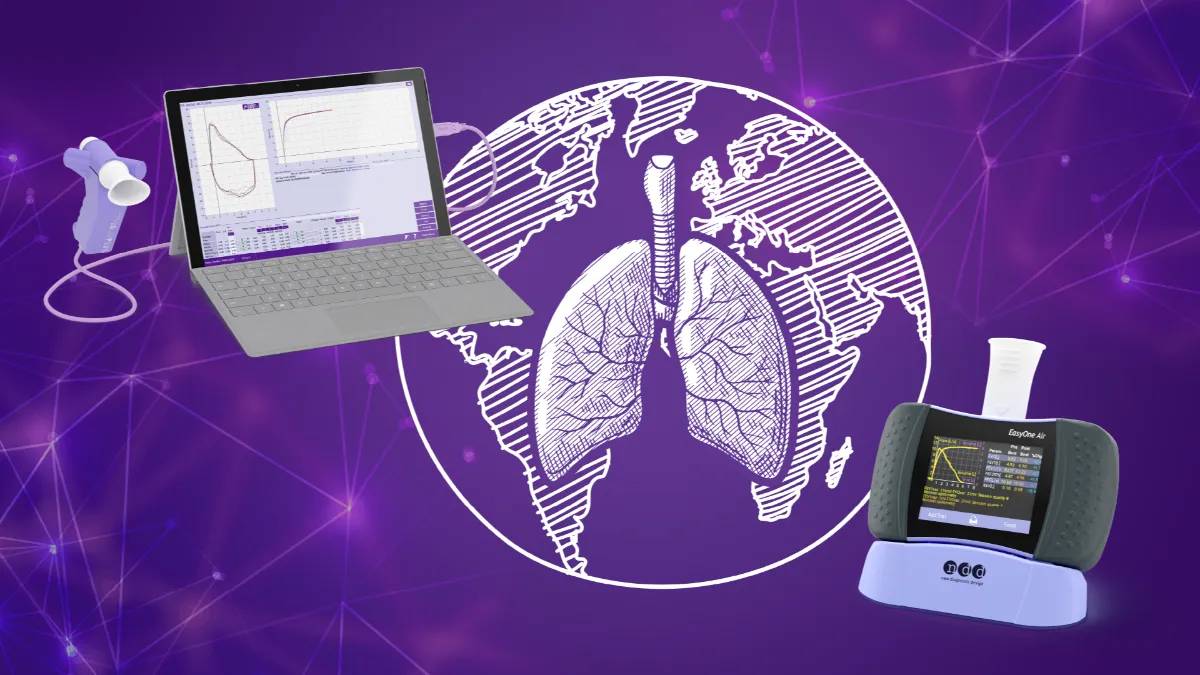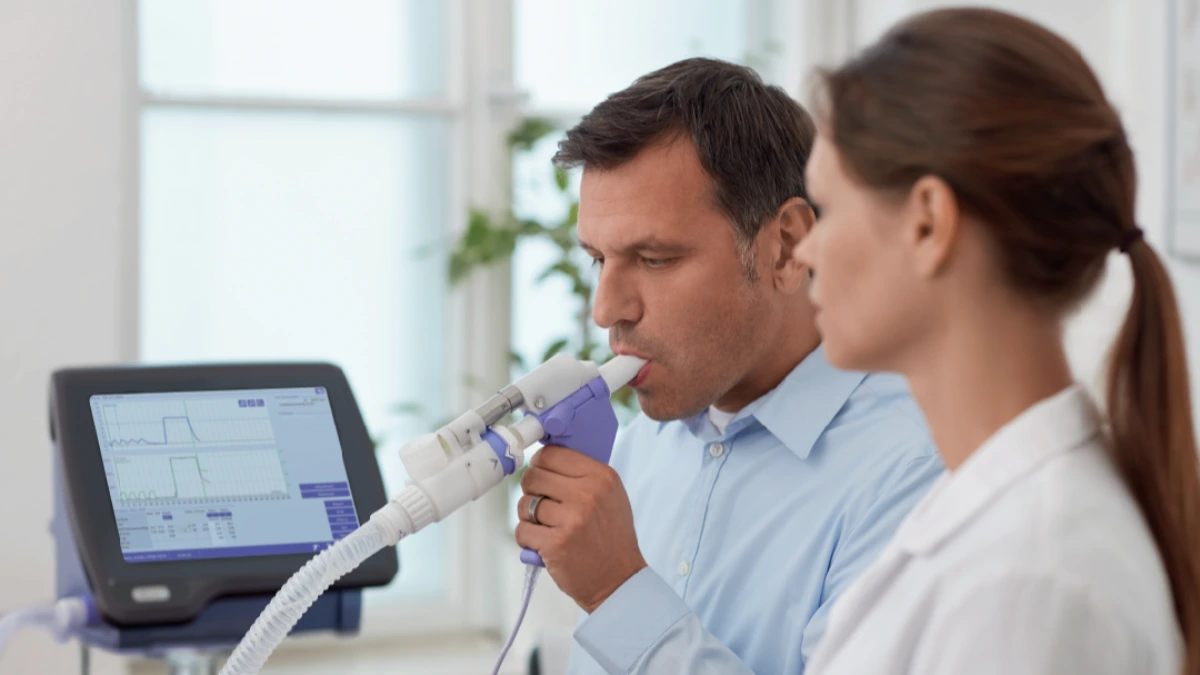Patients experience improved outcomes with early detection of COPD, yet late diagnoses remain the norm

The benefits of early diagnosis of COPD #
It’s estimated that approximately 15 million Americans are living with COPD without a diagnosis. These are individuals struggling with symptoms, unable to find answers, they’re often going to multiple doctors and hospitals, leaving appointments with more confusion than answers, and trying to figure out why their quality of life is declining.
It seems obvious that a misdiagnosis, late diagnosis, or lack thereof any diagnosis at all would result in frustrations on both the patient and physician side, but what are the actual, tangible effects of late diagnoses? In an ever-changing world where the shifting understanding of a disease condition is hard to fully appreciate by patients and doctors alike, it’s helpful — and alarming — to take a look at the figures.
A deeper look at the numbers #
- A retrospective study conducted in primary care centers in the United Kingdom found that patients with what they defined as early diagnosis had longer time to first exacerbation, decreased risk of first exacerbation, decreased exacerbation rate, and decreased rate of hospitalizations.1 The effects, at least in this study, of early diagnoses benefited both the patients and the healthcare system.
- Another study showed similar findings: Early COPD diagnoses were associated with lower exacerbation rate, as well as fewer comorbidities and lower costs.2 The authors of this study concluded that accurate diagnosing of COPD in primary care would likely reduce exacerbations and the economic burden of COPD.
- A Danish prospective cohort study, conducted in 2017, corroborated the above findings and differentiated between two populations.3 The undiagnosed, asymptomatic COPD population had increased risk of exacerbations and pneumonia; the undiagnosed, symptomatic population had both of those increased risks as well as increased risk of death. The authors of this study concluded based on their findings that early diagnosis and treatment of COPD are needed.
- A Spanish study, conducted well over a decade ago in 2009, found that those with COPD but without a formal diagnosis of COPD, had already experienced impaired health-related quality of life (HRQL) and activities of daily living (ADL).4
- People with COPD are at dramatically increased risk of hospitalization and death of comorbidities including COVID-19.5 Without an adequate diagnosis, many will have no idea that they are at this increased risk of severe complications, potentially reducing their likelihood of receiving life-preserving measures like COVID vaccines.
Most of these studies conclude short-term benefits (increased length of time to first exacerbation, decreased rate of exacerbations) but these short-term benefits are likely to translate to long-term benefits based on the critical importance of reducing rate of exacerbations.6
Early diagnoses are likely to reduce overall incidence of exacerbations #
Exacerbations in COPD are events where the patient experiences worsening of COPD symptoms. The Global Initiative for Chronic Obstructive Lung Disease (GOLD) guidelines highlight why exacerbations should be avoided: “[Exacerbations] negatively impact health status, rates of hospitalization and readmission, and disease progression.”7 Further, exacerbations, despite being acute health events with the possibility of severe outcomes including pulmonary embolism and heart failure, are not always reported to healthcare professionals.6 The GOLD 2023 Guidelines notes that these unreported events are “shorter in duration” and “have a significant impact on health status.”8 It is reasonable to assume that at least a subset of the undiagnosed population experience exacerbations, likely with no idea of what’s going on and with no option for treatment. The same study the GOLD 2023 Guidelines cited found that “patient recognition of exacerbation symptoms and prompt treatment improves exacerbation recovery, reduces risks of hospitalization, and is associated with a better health-related quality of life.”9
The importance of early diagnosis is underscored by the need to accurately diagnose COPD symptoms, educate the patient on exacerbations, and ensure patients have the appropriate recourse for their condition. Reducing the rate of exacerbations is regarded as a priority in improving outcomes in people with COPD.10
The first step is defining what constitutes an early diagnosis #
The importance of diagnosing people with COPD as early as possible in their journey is well-documented and well-understood. As beneficial as early diagnosis is, it’s not necessarily simple. There are a few reasons for why this is, including a shifting definition of COPD and lack of specifics on what constitutes an early diagnosis.
The definition of COPD has recently changed: The GOLD 2023 Guidelines updated the definition of COPD and incorporates much more background information on COPD, reflecting the deepened understanding of COPD as a heterogeneous condition with many different causes and clinical presentations. The GOLD Guidelines also includes definitions for early COPD, mild COPD, pre-COPD, and PRISm (people with preserved FEV1/FVC ratio but impaired FEV1).
The GOLD Guidelines define “early COPD” as “the ‘biological’ first steps of the disease in an experimental setting,” whereas mild COPD is related only to the severity of airflow constriction. Pre-COPD and PRISm, on the other hand, describe people that do not yet have clinical COPD. Pre-COPD includes people who have respiratory symptoms, but haven’t crossed the threshold in terms of spirometry to be considered as diagnosed with COPD. While not everybody with pre-COPD or PRISm will necessarily develop COPD, the GOLD Guidelines emphasize that this community should be evaluated and observed.
The GOLD Guidelines don’t define exactly what constitutes an early (or late) diagnosis of COPD. The aforementioned United Kingdom study defined “late diagnosis” as having at least three of eight indicators of early COPD in the five years preceding their diagnosis. Others were considered as “early diagnoses.”1 This study found that 2/3rds of patients with COPD fit the criteria having received a late diagnosis.1 Alternatively, a survey of pulmonologists found that most considered an early diagnosis as preceding symptom onset; with that definition, 85% of patients received late diagnoses.11 Both classification systems produced findings that showed that early diagnoses were less common than late diagnoses and were correlated with better outcomes and lower healthcare utilization. While it’s challenging to exactlydefine early diagnoses, it’s very clear that the tools are there: A retrospective review of the Cambridge University Hospitals’ lung function department found that performance of lung gas transfer alongside spirometry at initial appointments would help to reduce the likelihood of late diagnoses.12 The authors conclude with a strong statement, emphasizing how important this could be for patients and the healthcare system: “This will likely increase the identification of lung function abnormalities and provide patients with a definitive diagnosis earlier.”
The definition of COPD has been updated to reflect the improved understanding of the COPD etiology, mechanisms, and diagnosis and management of COPD. Further guidance should be developed in standardizing and defining what constitutes adequate time-courses for “early,” “timely,” and “late” diagnoses.
Kostikas K, Price D, Gutzwiller FS, et al. Clinical Impact and Healthcare Resource Utilization Associated with Early versus Late COPD Diagnosis in Patients from UK CPRD Database. Int J Chron Obstruct Pulmon Dis. 2020;15:1729-1738. doi:10.2147/COPD.S255414 ↩︎ ↩︎ ↩︎
Larsson K, Janson C, Ställberg B, et al. Impact of COPD diagnosis timing on clinical and economic outcomes: the ARCTIC observational cohort study. Int J Chron Obstruct Pulmon Dis. 2019;14:995-1008. doi:10.2147/COPD.S195382 ↩︎
Çolak Y, Afzal S, Nordestgaard BG, Vestbo J, Lange P. Prognosis of asymptomatic and symptomatic, undiagnosed COPD in the general population in Denmark: a prospective cohort study. Lancet Respir Med. 2017;5(5):426-434. doi:10.1016/S2213-2600(17)30119-4 ↩︎
Miravitlles M, Soriano JB, García-Río F, et al. Prevalence of COPD in Spain: impact of undiagnosed COPD on quality of life and daily life activities. Thorax. 2009;64(10):863-868. doi:10.1136/thx.2009.115725 ↩︎
https://www.ncbi.nlm.nih.gov/pmc/articles/PMC7404409/
van Gerwen M, Alsen M, Little C, et al. Risk factors and outcomes of COVID‐19 in New York City; a retrospective cohort study. J Med Virol. 2021;93(2):907-915. doi:10.1002/jmv.26337https://www.ncbi.nlm.nih.gov/pmc/articles/PMC7592304/
Wang Z, Zheutlin A, Kao YH, et al. Hospitalised COVID-19 patients of the Mount Sinai Health System: a retrospective observational study using the electronic medical records. BMJ Open. 2020;10(10):e040441. doi:10.1136/bmjopen-2020-040441 ↩︎Vijayasaratha K, Stockley RA. Reported and unreported exacerbations of COPD: analysis by diary cards. Chest. 2008;133(1):34-41. doi:10.1378/chest.07-1692 ↩︎ ↩︎
Wedzicha JA, Seemungal TAR. COPD exacerbations: defining their cause and prevention. Lancet Lond Engl. 2007;370(9589):786-796. doi:10.1016/S0140-6736(07)61382-8
Seemungal TA, Donaldson GC, Paul EA, Bestall JC, Jeffries DJ, Wedzicha JA. Effect of exacerbation on quality of life in patients with chronic obstructive pulmonary disease. Am J Respir Crit Care Med. 1998;157(5 Pt 1):1418-1422. doi:10.1164/ajrccm.157.5.9709032 ↩︎
Vijayasaratha K, Stockley RA. Reported and unreported exacerbations of COPD: analysis by diary cards. Chest. 2008;133(1):34-41. doi:10.1378/chest.07-1692
Wilkinson TMA, Donaldson GC, Hurst JR, Seemungal TAR, Wedzicha JA. Early therapy improves outcomes of exacerbations of chronic obstructive pulmonary disease. Am J Respir Crit Care Med. 2004;169(12):1298-1303. doi:10.1164/rccm.200310-1443OC ↩︎
Wilkinson TMA, Donaldson GC, Hurst JR, Seemungal TAR, Wedzicha JA. Early therapy improves outcomes of exacerbations of chronic obstructive pulmonary disease. Am J Respir Crit Care Med. 2004;169(12):1298-1303. doi:10.1164/rccm.200310-1443OC ↩︎
Seemungal TA, Donaldson GC, Paul EA, Bestall JC, Jeffries DJ, Wedzicha JA. Effect of exacerbation on quality of life in patients with chronic obstructive pulmonary disease. Am J Respir Crit Care Med. 1998;157(5 Pt 1):1418-1422. doi:10.1164/ajrccm.157.5.9709032 ↩︎
Laucho-Contreras ME, Cohen-Todd M. Early diagnosis of COPD: myth or a true perspective. Eur Respir Rev Off J Eur Respir Soc. 2020;29(158):200131. doi:10.1183/16000617.0131-2020
Jones RCM, Price D, Ryan D, et al. Opportunities to diagnose chronic obstructive pulmonary disease in routine care in the UK: a retrospective study of a clinical cohort. Lancet Respir Med. 2014;2(4):267-276. doi:10.1016/S2213-2600(14)70008-6 ↩︎
Sylvester KP, Youngs L, Rutter MA, Beech R, Mahadeva R. Early respiratory diagnosis: benefits of enhanced lung function assessment. BMJ Open Respir Res. 2021;8(1):e001012. doi:10.1136/bmjresp-2021-001012 ↩︎
Written by

Tré LaRosa
Tré LaRosa is a consultant, scientist, and writer in the Washington, DC area with extensive experience working in research (basic, translational, and clinical) and on patient-reported outcomes. He has also written extensively on neuroscience, pulmonology, and respiratory conditions, including from the patient perspective. He enjoys learning, reading, writing, spending time outdoors, and telling everybody about his mini golden retriever, Duncan.









